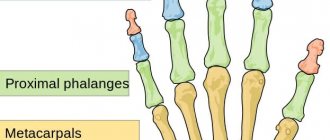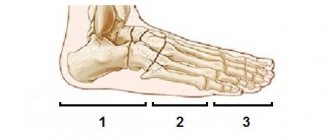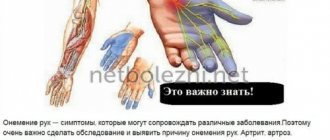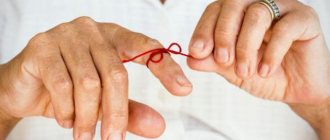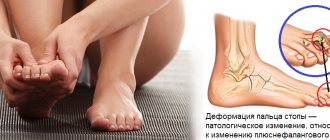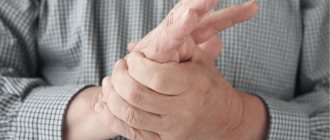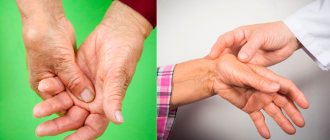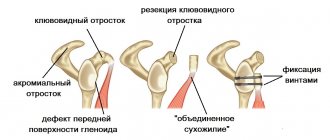Bruised toes are one of the most common injuries encountered by trauma surgeons. You can get damaged both during professional activities and at home. Most often, a bruised toe occurs due to carelessness when the patient accidentally touches foreign objects. In this case, acute pain immediately appears, and after a while - redness and swelling of the tissues. A traumatologist treats a bruised toe. This is the doctor you should contact as soon as possible after an injury.
You can make an appointment with a traumatologist in Yaroslavl at the CONSTANTA Clinic. The specialist will examine the injured limb, make a preliminary diagnosis and, if necessary, prescribe additional diagnostic methods. Bruised toes are not as harmless as is commonly believed. Often, after receiving an injury, patients try to deal with pain and swelling on their own for several days, unaware of the presence of an ordinary or marginal fracture of a finger and other serious injuries that can easily be obtained even at home.
Features of the structure of the toes
The toes are based on tubular bones. Each finger is formed by three phalanges, except the thumb, which has only two. Thanks to the movable joints and tendons, the fingers can perform various movements and help a person maintain balance while walking. Even minor damage to the soft and hard tissues of the foot leads to movement restrictions and knocks a person out of the usual rhythm of life.
During a bruise, tissue damage and microtrauma of blood vessels occur. This leads to an increase in edema and the development of an inflammatory reaction. Even a minor injury requires appropriate treatment for a bruised toe. Otherwise, swelling and pain will increase, limiting the patient's physical activity. Often, bruised toes are accompanied by blue discoloration and peeling of the nail plate. In this case, it may require partial or complete removal.
Prevention
Preventive measures for hand bone fractures include:
- Prevention of injuries (domestic/sports), for which it is necessary to use protective equipment/follow safety precautions during sports, as well as follow rules of behavior that reduce the risk of injury when in potentially dangerous conditions (slippery roads, poor visibility, crossing traffic routes, etc. .).
- Improve bone tissue trophism by including a diet of foods containing sufficient amounts of complete protein, microelements/vitamins, and collagen .
- If there is a risk of developing pathological fractures, adequate/timely treatment of osteoporosis .
Signs of a bruised or broken toe
The symptoms of a bruise and a broken toe are similar: the patient feels pain that does not allow him to step on the foot, and also notices swelling of the soft tissues. Only a qualified specialist can distinguish a fracture or crack from a bruise. An accurate diagnosis is made based on X-ray data and professional examination.
A patient who has suffered a bruised toe should be alert to the following signs:
- pathological mobility of the toes at the site of injury;
- prolonged pain syndrome, which is poorly relieved by classical analgesics;
- increasing swelling and cyanosis of the skin;
- crunching sound (crepitus) when pressing on the injury site;
- unnatural position of the foot or toes.
If such symptoms appear, it is necessary to make an appointment with a traumatologist and conduct an X-ray examination to make sure that there is no fracture of the toe. Do not self-medicate under any circumstances, even if you are sure that the injury you received is harmless. Our Clinic also employs pediatric traumatologists, and you can show your child to a specialist at any time or seek medical help from an experienced doctor yourself.
With a marginal fracture of the big toe, which often occurs while running, the swelling spreads to the entire foot, and the skin becomes noticeably blue. The patient experiences severe pain and cannot step on his leg; he often takes a forced position, which allows him to spare the limb as much as possible. Signs of a big toe fracture can be supplemented by pathological mobility and the presence of crepitus.
List of sources
- Edinak A.N. Main principles and methods of treatment of forearm fractures / A.N. Edinak, V.N. Kostik // Trauma. - 2002. - T.Z, No. 3. - P. 315–318.
- Matsukatov F.A., Gerasimov D.V. On factors influencing the timing of fracture consolidation // Bulletin of Traumatology and Orthopedics named after. N.N. Pirogova N 2, 2021. pp. 50-57.
- Vorontsov P.M. Treatment of fractures of the distal metaepiphysis of the forearm bones / P.M. Vorontsov // Man and his health: Materials / Russian National Congress. – St. Petersburg, 1997. – P. 80.
- Angarskaya, E.G. Features of fractures of the radius in a typical location / E.G. Angarskaya, B.E. Munkozhargalov, Yu.N. Blagoveshchensky // Siberian Medical Journal. - 2008. - No. 3. - P. 33-35.
- Ardashev, I.P. Surgical treatment of improperly consolidated fractures of the distal metaphysis of the radius / I.P. Ardashev, V.N. Drobotov, A.V. Ivanov et al. // Modern high technology. - 2009. - No. 12. - P. 19-21.
Fractured toe: types
A toe fracture can be an open fracture, where soft tissue damage occurs and bone fragments may protrude from the wound. In this situation, there is a direct threat of secondary infection. The patient urgently needs antiseptic treatment. For open fractures of the toes, treatment should not be delayed.
With closed fractures of the fingers, the integrity of the skin is not broken, and displacement of the fragments is usually not observed. But this type of fracture does not exclude the development of infectious and other complications. A closed fracture of the toe is often complicated by a purulent infection, especially when the nail bed is damaged and the nail plate peels off, which becomes an entry point for infectious pathogens.
When a displaced fracture occurs, comparison of bone fragments is required, which will give the finger an anatomically correct shape and restore the impaired functions of the limb.
Diet
Diet for fractures
- Efficacy: therapeutic effect after a month
- Timeframe: 2 months
- Cost of food: 1600-1800 rubles per week
Diet for fractures of the arm bones is an obligatory component of complex treatment and is aimed at accelerating the process of bone healing. A feature of the diet for fractures is:
- Sufficient content of complete animal protein containing all the necessary amino acids. The amount of protein in the daily diet should be about 100 g and is provided by consuming lean red meat, chicken eggs, poultry, dairy products (hard cheese, cottage cheese), and white/red fish.
- Sufficient content of products containing macro/microelements (calcium, zinc, magnesium, phosphorus). The main products containing calcium include fermented milk products, cottage cheese/milk cheeses, sesame seeds, spinach, hazelnuts, and salad. But effective absorption of calcium can only occur against the background of the presence of vitamin D in the diet (mainly in fatty sea fish and its fat). Phosphorus can enter the body with beef liver, meat, egg yolk, fish, beans, buckwheat porridge, walnuts, buckwheat/oatmeal, dairy products; magnesium - with any wholemeal flour products, porridge (buckwheat, wheat, oatmeal), legumes, bananas, almonds; zinc - with bran, pumpkin seeds, yeast, seafood, sprouted grains, mushrooms, potatoes, beef, sesame seeds, peanuts, onions.
- No less important is the presence of products containing sufficient amounts of vitamins A , E , B , C , D , which are necessary to accelerate reactions during the healing of fractures. Vitamin D is especially important , which is rich in chicken yolk, fish oil/fatty fish (sprats); vitamin E , contained in various cold-pressed vegetable oils; vitamin C - in fruits/berries; rose hips, sea buckthorn; B vitamins - in garlic, yeast, offal, cereals, sweet peppers, walnuts, hazelnuts, milk. A fracture of the radius heals on average in 27-35 days, and throughout this entire period, as well as for another 1-2 months, you must follow a diet. It is recommended to supplement dietary nutrition with a vitamin-mineral complex. It is also necessary to completely exclude alcohol-containing drinks and tea/coffee from the diet, the consumption of which helps to reduce the absorption of calcium.
Complications of toe injuries
Broken toes can lead to dangerous health consequences even when the injury is relatively mild. Without qualified medical care, skin wounds, cracks and bone fractures can provoke the development of the following complications:
- massive hematomas;
- ankylosis (joint immobility);
- deformation of finger joints;
- formation of bone callus;
- sepsis;
- secondary infections.
Damage to the soft and hard tissues of the extremities is especially dangerous for patients who suffer from metabolic disorders and chronic diseases, in particular diabetes. For such patients, even a minor injury can pose a hidden threat.
Causes
The most common cause of fracture of the arm bones is trauma of various origins (at work, at home, during sports). This is predominantly a fall of a person on an outstretched/abducted arm; much less often, the injury is caused by a strong blow to the arm. Less common are fractures whose pathological process is based on osteoporosis .
Factors that significantly increase the risk of fracture include:
- Impaired ossification of the bone matrix/reduced bone density ( osteomalacia / osteoporosis ).
- Physical overload.
- Weakness of the muscular-ligamentous apparatus of the hand.
- Excess weight.
- Poor physical fitness.
- A history of upper extremity injuries.
- Diseases of the joints of the hand (elbow/wrist)
- Long-term/uncontrolled use of medications that affect bone metabolism (antidepressants, cytostatics, anticonvulsants, glucocorticoids, etc.).
- Overload in athletes due to excessive training.
- Genetically determined disorders of the osteogenesis process.
- Osteoporosis (mainly in older people, which is caused by metabolic disorders in bone tissue).
- Bone tumors/bone cysts .
- Tuberculosis of bones /joints.
How to treat bruises and broken toes
Patients with bruises and broken toes require first aid. It is very important to contact a traumatologist in a timely manner and undergo the prescribed examination. This will allow the doctor to select effective treatment for bruised toes as soon as possible and take all necessary measures to prevent complications.
Medical tactics for bruises and fractures of fingers are selected depending on the nature of the injury. With an open fracture, the wound can quickly become infected and fester, and the risk of developing tetanus cannot be ruled out. Experts practice the administration of anti-tetanus serum and antibacterial treatment of open wounds of the toes, especially if they are caused by contact with the ground and working tools.
Immobilization is indicated for almost all toe injuries. It allows you to relieve the sore foot and speed up the patient’s recovery process. Treatment of a fractured finger with bone displacement requires special professionalism when it is necessary to restore the anatomical shape of the phalanx. In this case, the correct fusion of bone tissue in the future depends on the professionalism of the traumatologist.
Even a minor finger injury is accompanied by pain and signs of an inflammatory reaction. To relieve pain, specialists prescribe analgesics in the form of local agents, tablets or injections. Drugs are selected taking into account the severity of the patient's condition.
Local agents with anti-inflammatory, regenerating and analgesic properties are recommended for long-term use. They alleviate the patient’s condition, have an antiseptic effect and promote rapid resorption of hematomas.
Case study No. 1
A girl whose phalanx of her finger fused incorrectly described her complaints like this:
“If the hand is at rest, there is a pulling sensation in the finger somewhere from the middle of the palm, as if it is heavier than the rest, or as if stiff, this does not bother you, it is just noticeable. When vibrating, shaking a finger, it hurts from slightly to very much, for example, if you touch something with your hand (not hit, but lightly) - get caught on clothes, hand in hand, furniture - it already hurts, I wince, but tolerable. My husband suddenly took my hand - I screamed, there was sharp pain. Holding a weighty object (salad bowl, book) in your hand (4 fingers at the bottom, big at the top) hurts, I immediately grab it with my other hand. I unclench my fist after I bring the bag from the store and have to endure it for a couple of minutes until the pain subsides - although the load seems to be greater on the other fingers, and it didn’t hurt to carry it. At the same time, it hurts to bend and unbend a finger only if you try to do it with effort, further than he can do” (the author’s spelling and punctuation have been preserved).
The image clearly shows a displacement along the articular surface of the middle phalanx, which was not eliminated during treatment of the fracture.
In this case, corrective osteotomy is impossible and plastic surgery was performed with an osteochondral graft from the hamate bone (hemi-hamate arthroplasty).
In this operation, a piece of bone with cartilage from the hamate is taken, which is ideal for replacing a defect in the articular surface of the base of the middle phalanx.
This is what the finger looks like after surgery.
Three months later, the girl wrote about him in a completely different way:
“I perform all the actions that I couldn’t do with my hand before the operation because of pain in the finger without any problems, the only slightly painful sensations are when I try to fully bend it and immediately straighten it completely and vice versa, but the pain is not sharp and goes away immediately.
The set of rehabilitation exercises that the doctor showed me at the handclinic began slowly - now I perform it much more actively, the strength in the finger is almost on par with the rest, plus the steering wheel (a good compression trainer), plus briefcases - I use my hand actively, even the muscle of the left forearm is already aligned with the right, otherwise I compared them in August by accident, I was quite surprised at how weak my left arm was in six months after the fracture.
As far as I understand your forecasts, things with the finger are, in principle, as expected.”
